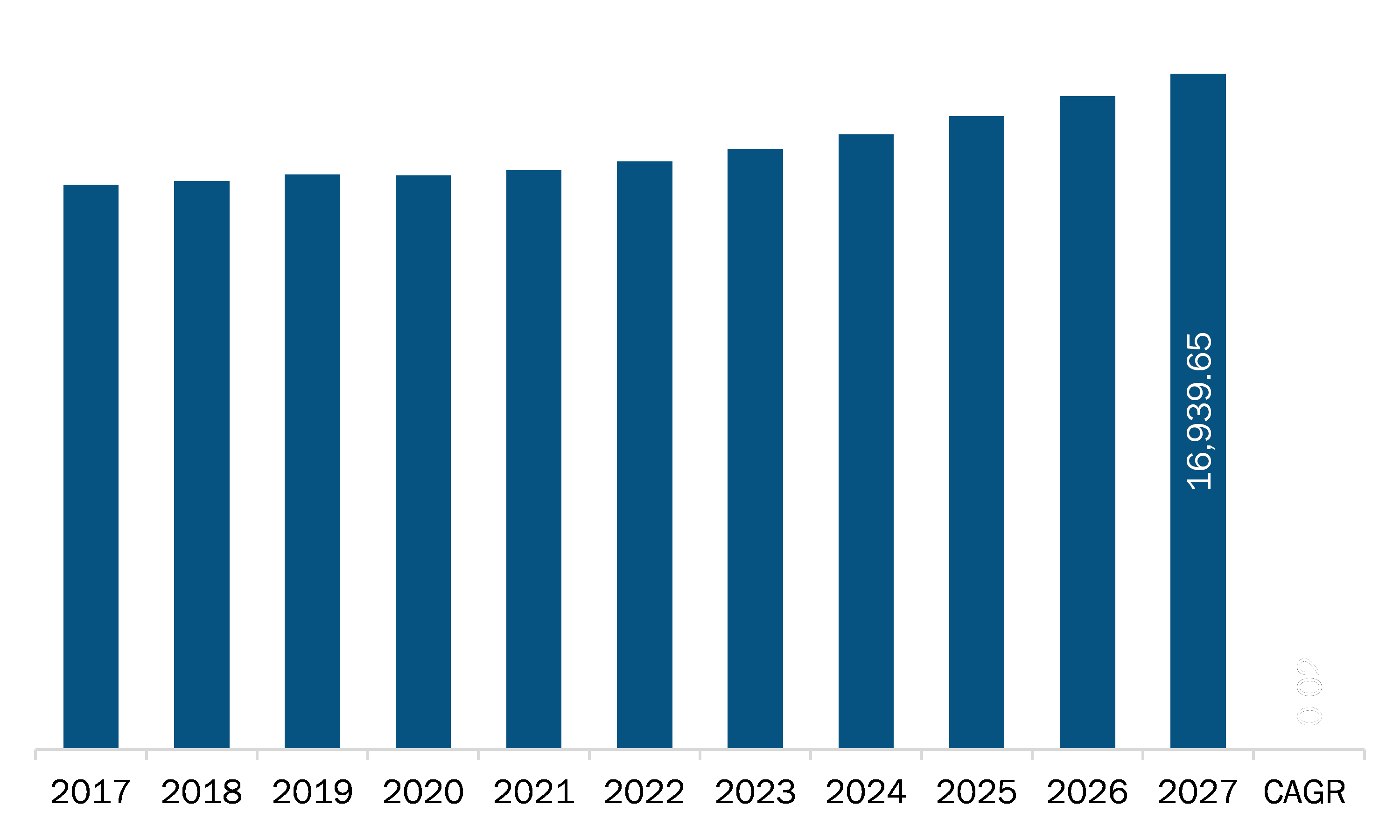The wheat flour market in SAM is expected to reach US$ 16,939.65 million by 2027 from US$ 14,410.46 million in 2019 and is expected to grow at a CAGR of 2.4% from 2020 to 2027.
The market in the SAM region consists of several developed and developing economies, such as Brazil, Argentina, and the rest of South America. The region is contributing to the growth of the wheat flour market in relation to the diversification of consumer base due to surging demand for convenience food. Growing expenditure on the convenience food products along with rising disposable income is some of the key factors driving the wheat flour market in South America. The demand for bakery products made from flour in South America is driven by the nutritional profile, convenience & accessibility associated with them. An increase in urbanization and working population in South America is also responsible for propelling the demand for fast food and bakery products manufactured using wheat flour, which leads to the growth of wheat flour market in South America.
The health benefit of wheat flour is the key driver for the wheat flour market's growth in SAM. Wheat flour is considered one of the most popular food ingredients consumed globally. Wheat flour is known for its nutritional properties and health benefits, such as reducing cholesterol levels, regulating metabolism, minimizing obesity, and balancing blood sugar levels. Wheat flour is considered a rich source of gluten, which adds strength and elasticity to the baked products. The amount of gluten may vary according to the different varieties of wheat flour available. Besides, wheat flour is formed of highly nutritious fiber, which has an abundant presence of essential nutrients such as vitamins, minerals, and catalytic elements, especially vitamins B and E. The consumption of wheat flour is also perceived to alleviate the risk of breast cancer by boosting estrogen's metabolic rate.
Moreover, wheat flour is known to impart nourishment, and energy required for overall body functions. Wheat manufacturers have also introduced vitamin-A fortified wheat flour to cater to the nutritional needs of the population. The demand for wheat flour is especially high in food industries due to its growing need for bakery and confectionery products. Besides, rising inclination toward a healthy lifestyle and growing instances of diabetes, cancer, and other such diseases are among the factors driving the market's growth under study. Also, a rising preference toward convenience staple foods, along with the growing importance for high-protein flour products, is positively affecting the market growth.
However, COVID-19 has affected economies and industries in various countries due to lockdowns, travel bans, and business shutdowns. In SAM region, Brazil has the highest number of COVID-19 cases, followed by Peru, Ecuador, Chile, and Argentina, among others. The government of South America has taken an array of actions to protect their citizens and contain COVID-19’s spread. It is anticipated that South America will face lower export revenues, both from the drop in commodity prices and reduction in export volumes, especially to China, Europe, and the United States, which are important trade partners. Containment measures in several countries of South America will reduce economic activity in the manufacturing and service sectors for at least the next quarter, with a rebound once the epidemic is contained.
SAM Wheat Flour Market Revenue and Forecast to 2027 (US$ Million)

- This FREE sample will include data analysis, ranging from market trends to estimates and forecasts.
SAM Wheat Flour Market Segmentation
SAM Wheat Flour Market, by Product Type
- All-Purpose Flour
- Bread Flour
- Semolina and Durum Flour
- Whole Wheat Flour
- Others
SAM Wheat Flour Market, by End User
- Residential
- Commercial
SAM Wheat Flour Market, by Application
- Bread
- Bakery Products
- Noodles and Pasta
- Others
SAM Wheat Flour Market, by Distribution Channel
- Supermarkets and Hypermarkets
- Convenience Stores
- Online
- Others
SAM Wheat Flour Market, by Country
- Brazil
- Argentina
- Rest of SAM
SAM Wheat Flour Market -Companies Mentioned
- Archer-Daniels-Midland Company
- General Mills Inc.
- George Weston Foods Limited
- KORFEZ Flour Group
South America Wheat Flour Report Scope
| Report Attribute | Details |
|---|---|
| Market size in 2019 | US$ 14,410.46 Million |
| Market Size by 2027 | US$ 16,939.65 Million |
| CAGR (2020 - 2027) | 2.4% |
| Historical Data | 2017-2018 |
| Forecast period | 2020-2027 |
| Segments Covered |
By Product Type
|
| Regions and Countries Covered |
South and Central America
|
| Market leaders and key company profiles |
|
- Historical Analysis (2 Years), Base Year, Forecast (7 Years) with CAGR
- PEST and SWOT Analysis
- Market Size Value / Volume - Regional, Country
- Industry and Competitive Landscape
- Excel Dataset
Recent Reports
Testimonials
Reason to Buy
- Informed Decision-Making
- Understanding Market Dynamics
- Competitive Analysis
- Identifying Emerging Markets
- Customer Insights
- Market Forecasts
- Risk Mitigation
- Boosting Operational Efficiency
- Strategic Planning
- Investment Justification
- Tracking Industry Innovations
- Aligning with Regulatory Trends





















 Get Free Sample For
Get Free Sample For